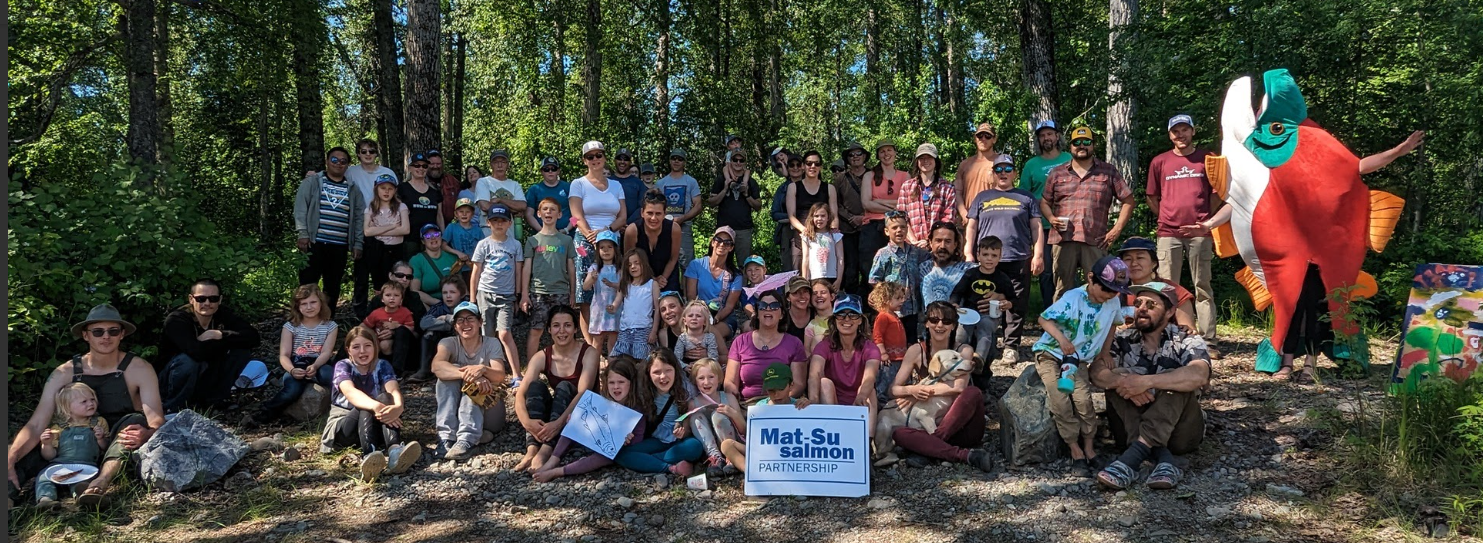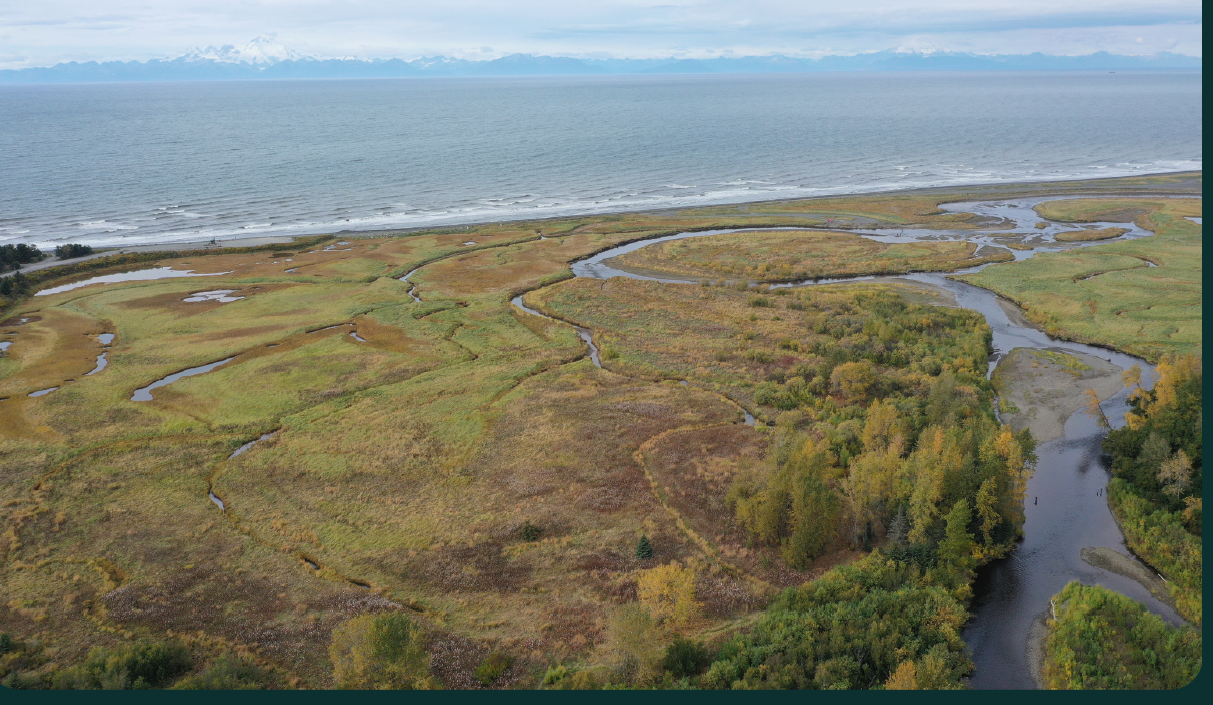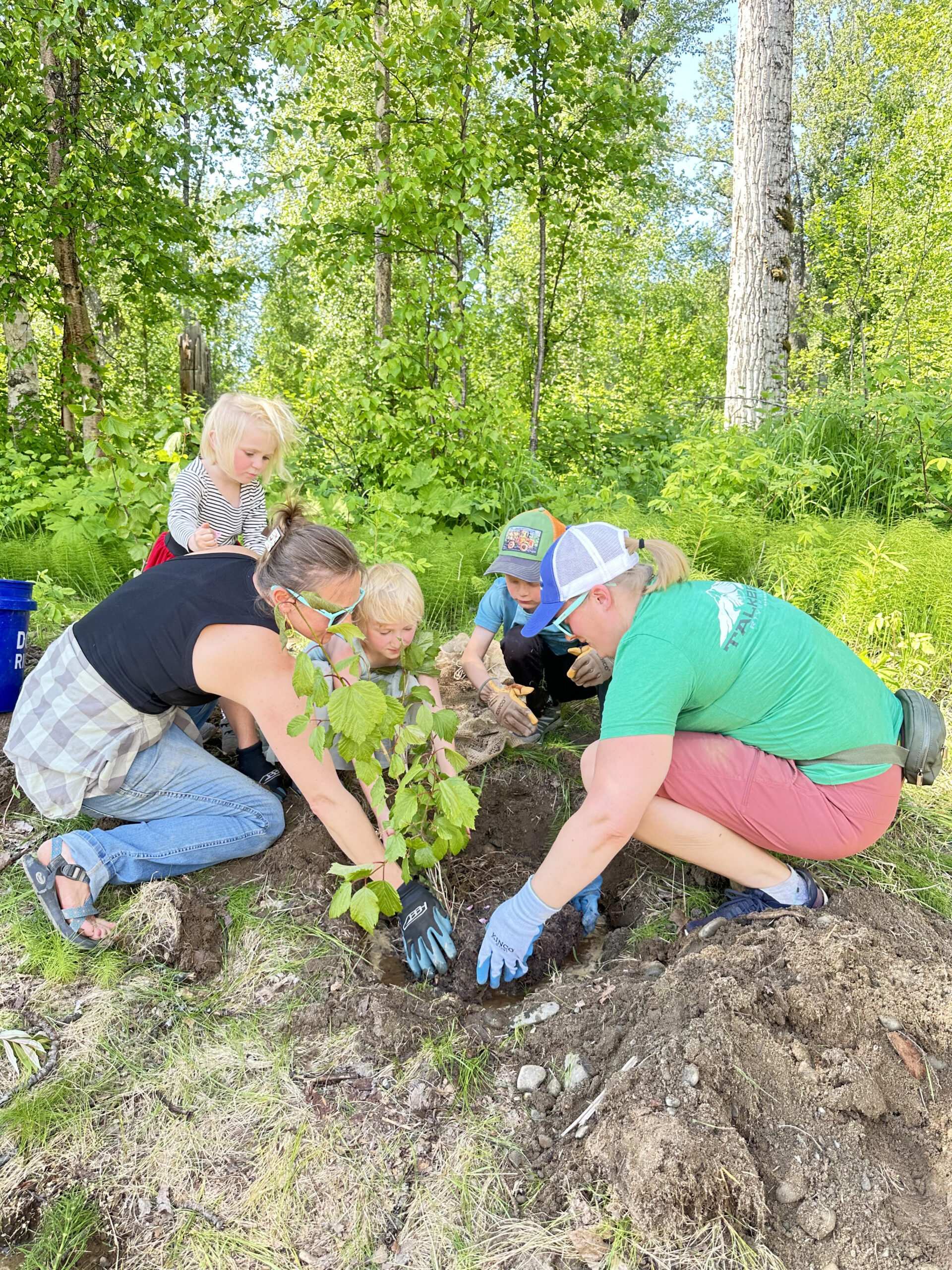The 10th annual Mat-Su Salmon Science & Conservation Symposium was November 8th & 9th in Palmer, Alaska!
Over 120 participants attended this year’s symposium to share information about Mat-Su Basin salmon and salmon habitat, and to promote an exchange of ideas about salmon science and conservation. More than 20 partners shared their work through presentations covering a variety of topics, from identifying and conserving community assets to genetic stock identification of Cook Inlet salmon.
Keynote speaker Dr. Tara Martin, from the University of British Columbia, introduced tools that can assist in Strategizing How to Avoid Irreversible Loss of Wild Salmon Populations. Bill Rice, from the U.S. Fish & Wildlife Service and an active former Steering Committee member, reviewed the decade of Partnership achievements and discussed potential priorities moving forward as the Strategic Action Plan is up for revision.
True to a spirit of collaboration, the Partnership set aside time for “open space” discussion groups to address topics of interest, identify information gaps, and address challenges to conserving salmon in the Mat-Su Basin. The Partnership’s first ever story-telling event was also a big hit. If you missed it, stay tuned for recordings of the event, and find a storytelling program here.
An audio recording of Dr. Martin’s keynote address and links to Symposium presentations are below. Find a summary of all media coverage here.
Keynote Speaker: Dr. Tara Martin, University of British Columbia Department of Forest & Conservation Sciences
 Dr. Tara Martin is a conservation scientist and pioneer in the translation of ecological data into conservation management decisions. Dr. Martin’s research is being adopted around the world to help organizations decide what actions to take, when and where to get the best conservation outcomes, while taking into account the many other competing needs of society. Tara will speak about what it takes to avoid irreversible loss of wild salmon populations and draw on her team’s current work in Fraser River Estuary, British Columbia, historically one of the largest salmon bearing rivers in the world. Learn more here.
Dr. Tara Martin is a conservation scientist and pioneer in the translation of ecological data into conservation management decisions. Dr. Martin’s research is being adopted around the world to help organizations decide what actions to take, when and where to get the best conservation outcomes, while taking into account the many other competing needs of society. Tara will speak about what it takes to avoid irreversible loss of wild salmon populations and draw on her team’s current work in Fraser River Estuary, British Columbia, historically one of the largest salmon bearing rivers in the world. Learn more here.
Quick Links: Agenda, Symposium Booklet, Symposium Flyer, Storytelling Event Flyer
Presentations: Wednesday, November 8th 2017 (Click on the titles below for access to presentation slides)
Keynote Address – Martin, Dr. Tara: Strategizing How to Avoid Irreversible Loss of Wild Salmon Populations Listen to the audio recording here.
Identifying and Conserving Community Assets
- Kent, Dan: Building a Salmon-Safe Mat-Su Basin: Guidelines for Fish-friendly Development
- McMillan, Mike: A Model for Identifying Community Assets in the Mat-Su Core Area
- Rinella, Dan and Donkersloot, Rachel: Towards More Integrated Salmon Knowledge Systems
- O’Connor, Amy: The Public Process and Salmon
Improving our Knowledge of Salmon & Their Habitat
- Shaftel, Rebecca: Characterization of Thermal Regimes in the Mat-Su Basin
- Mazzacavallo, Michael: Winter Inter-gravel Temperature Monitoring of Salmon Redds within the Mat-Su Streams
- Aho, Kelsey: Assessing Watershed Integrity in the Matanuska-Susitna River Watershed
- Eisenman, Mark: Sampling Previously Unmapped Streams in the Mat-Su Borough
- Ashline, Joshua: Juvenile Coho Salmon Overwintering Site Selection / Dispersal Strategies in Big Lake Watershed
Invasive Species and Fish Passage
- Jalbert, Chase: Landscape Genetic Diversity of Native and Invasive Northern Pike in Alaska
- Willette, Mark: Chelatna Lake Invasive Northern Pike Suppression
- Coleman, Daniel: Elodea Eradication in Remote, Dynamic Systems
- Jeffries, Alexandra: Assessing Fish Passage Success in Culvert Structures with a Two-dimensional Algorithm Considering Physical Capabilities of Juvenile Salmonids
- Janke, Paul: DOT&PF Culvert Fish Passage Design Strategy
Presentations: Thursday, November 9th, 2017
Protections for Salmon, Conservation & Restoration Updates
- Benkert, Ron: An Intro to the Division of Habitat, Who We Are and What We Do
- Anderson, Emily: Understanding Stand for Salmon: Protecting Alaska’s Fisheries for Future Generations
- Larquier, Ann Marie; Ellis, Leah and Keith, Kevin: Instream Flow Reservations in the Mat-Su Basin and Upper Cook Inlet
- Grauf, Jeremy: Impacts and Mitigation in Waters of the United States within the Mat-Su
- Hagan, John: Tyonek Tribal Conservation District Habitat Monitoring and Restoration Updates
Rice, Bill: What Has the Mat-Su Basin Salmon Habitat Partnership Achieved and What Will the Priorities Be Going Forward?
Martin, Dr. Tara: Prioritizing Threat Management to Save Mat-Su Salmon
Understanding Origins of Harvested Salmon in Cook Inlet & Spawning Distribution
- Barclay, Andy: Where did Commercially-caught Coho Salmon in Cook Inlet Originate: Genetic Stock Identification Sheds Some Light
- St. Savior, Adam: Northern Cook Inlet Chinook Salmon Marine Harvest Stock Composition
- Campbell, John: Spawning Distribution of Susitna River Chinook Salmon
A huge Thank You to the many who funded, planned, volunteered and participated in any way to make the 10th annual symposium a success. We hope to see you next year!
- US Fish and Wildlife Service
- Mat-Su Borough
- ConocoPhillips Alaska
- Alaska Center
- Alaska Department of Fish and Game
- Alaska Salmon Alliance
- Susitna River Coalition
- The Nature Conservancy
- Cook Inlet Aquaculture Association
- Mat-Su Conservation Services
- Bullitt Foundation
- Trout Unlimited
- BP
- Great Land Trust


